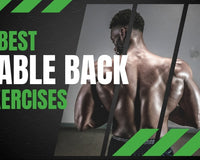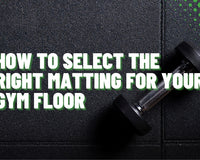If you're planning on strengthening those leg muscles of yours, one of the best possible exercises for you to do is the squat.
That said if you're by yourself, squatting with a regular rack and barbell can be somewhat of a challenge, especially if you have no one spotting you and you're trying to lift heavy.
Therefore, you might want to try using a Smith machine to do squats as they are a great way to safely push your limits.
How to do a Smith Machine Squat
So let's get right to it with a step-by-step tutorial on how to do a Smith machine Squat.
Step 1: The Setup
You first need to set the Smith machine up before you do a squat. Most important of all, the bar of the Smith machine should be about level with your shoulders or slightly low so you can easily release the bar catches.
The bar should be resting on your traps and rear deltoids when you are standing up, not on the back of your neck.
Also, set the safety catches to slightly below your range of motion so if the worst were to fail a rep, the safety catches will prevent the bar from being any further.
If you don't know the range of motion you might want to try a few reps with no weight to work out what height to set the catches at.
You can now start adding some weight onto the bar, although if you are just getting started, you might not need to add any weight at all depending on how much the Smith machine bar weighs as the weight can vary.
Step 2: The Starting Position
The starting position for a squat using a Smith machine is very simple.
First, work your way under the bar and make sure that it is resting on your rear delts and your traps.
We really can't stress enough just how important it is that the bar does not rest on the back of your neck.
Take your hands and place them roughly shoulder width on the bar, or realistically slightly wider than your shoulders.
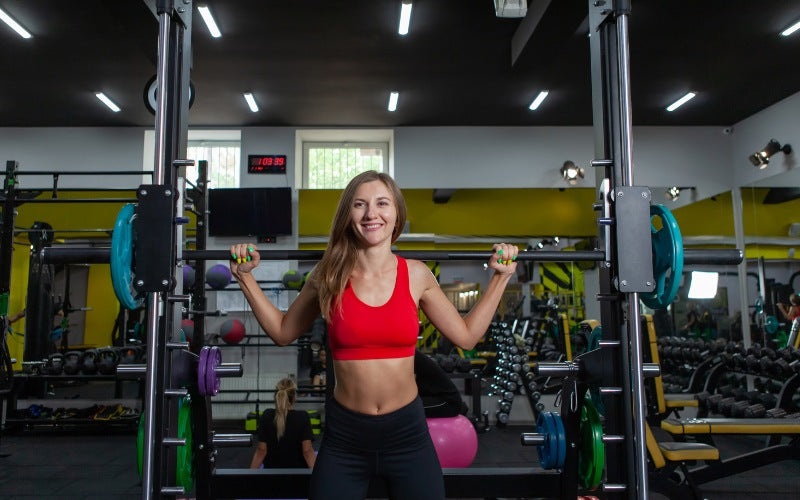
The width can vary depending on your shoulder mobility, but find what feels comfortable for you.
Make sure that your elbows are aligned with your torso and pointed back just a little bit.
Stand with your feet roughly shoulder width apart, so that your feet are slightly out in front of your knees and your legs straight.
Different people have slightly different ideal squatting positions, so find yours.
Remember that when you squat, one of your main goals should be to keep your knees behind your toes and your back completely straight.
The final step before the way down, the descent, is to lift a little and rotate the wrists backward to unhook the smith bar from the rack on the machine.
Step 3: The Way Down or Descent
Right before your descent, you want to take a big inhale.
Powerlifters might tell you to hold your breath as you descend, as this can help you brace, but unless you're pushing your absolute limits, this isn't really necessary.
To descend, bend at the knees and push your hips back a little bit. Make sure to keep your chest up, your head forward, your shoulder blades squeezed together, and your chest puffed forward. This will ensure that your spine stays in good condition.
In terms of how deep you go, remember that the deeper you go, the more the Smith machine squat will work all of your leg muscles.

Generally speaking, having your buttocks in line with the lower portion of your calves is ideal. If your quadriceps are parallel to the ground when you are in the lowest position, you might want to try going a little lower. That said, going either too high or too low is not beneficial.
Going too low can cause the bottom part of your back to round which you want to avoid.
Step 4: The Push Up or Ascent
The final step here is the push-up or the ascend, and for this, you want to exhale all that breath you've been holding in and then drive upwards. Most of the force should come from your heels.
In other words, when you drive upwards, pretend that you are shoving your heels down into the ground.
Make sure that your elbows stay pointed, your core engaged, and your spine is straight as you push back up. Don't lock your knees out fully when you come to the top.
Your squat is now complete.
Related Post: Front Squat vs Back Squat: Which One's Better?
Tips for a Successful Smith Machine Squat

Before we call it a day, let's go through some quick tips on how to be successful when doing a Smith machine squat.
Don't Let Your Spin Curve - "Butt Wink"
No matter what type of squat you're doing, never curve your spine, as this is a very easy way to hurt yourself.
Make sure that your back stays straight the whole time, which is easy to do if you engage your upper back muscles and squeeze your shoulders together.
Butt wink is when the bottom of your spine rounds at the bottom of a squat. So you are either going too deep or might need to work on your flexibility to stop this from happening
Don't Move Too Quickly!
One of the biggest mistakes that people make when they first start squatting is moving far too quickly. You want to stay focused and maintain good form. A good squat should take around four or five seconds at the very least.
Avoid Knee Cave
Another big mistake is allowing your knees to cave in, or in other words having your knees point inward as you squat.
Your knees should stay straight, so try to press them outwards a little bit while squatting.
If you are struggling to stop your knees from going in, you can add a resistance band around your thighs which will strengthen the motion of pushing your knees out.
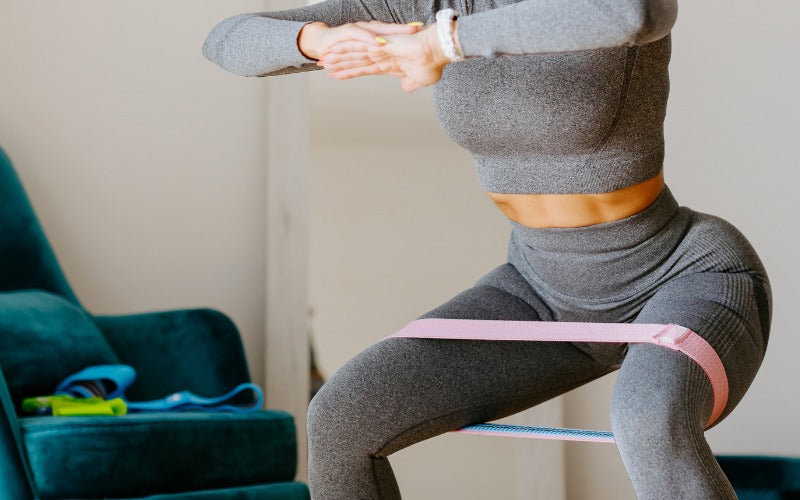
Don't Lean Forward
Yet another mistake to avoid when doing any kind of squat is leaning forward.
Remember, here you are lowering your whole upper body while keeping your back straight, using only your knees to lower yourself down.
If you find yourself bending forward at the hip, then you're making a mistake.
Range of Motion
What you are looking for is a full range of motion, so you want to avoid not going deep enough but also going too deep like we saw above with the "butt wink".
A full range of motion will make the movement much more effective and get you the best results from your workouts.
What Muscles Does a Smith Machine Squat Train?
Smith machine squats work a wide range many muscles in your lower body, primarily the glutes, the quadriceps, the hip adductors, and your lower back muscles.
However, this exercise also works your hamstrings, spinal erectors, calves, and your abdominal muscles.
What you do need to consider here is that your calves, abs, and other stabilizer muscles are used much less in a Smith machine squat than when you are doing a free barbell squat, which is because of the lack of balance required when using a Smith machine.
When using a Smith machine, all of your stabilizer muscles aren't activated nearly as much as when you are using a squat rack. Let's take a quick look at each of the main muscles trained by a Smith machine squat.
Related: Smith Machines vs Squat Racks Explained
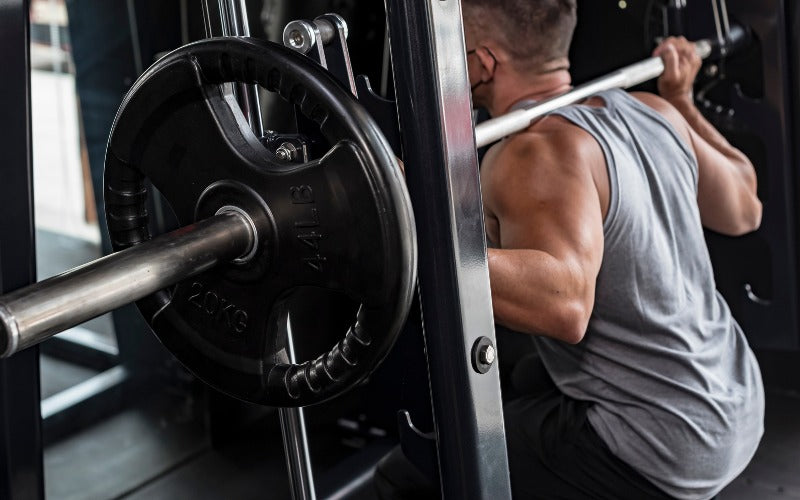
The Quadriceps
The main muscle groups worked by the Smith machine squat are the quadriceps, which consist of four separate muscles.
What is very convenient about a Smith machine squat is that it targets all four muscles that are part of this quadriceps muscle group.
Due to the position of your feet when doing a Smith machine squat, you'll generally activate your quads more than if you are doing a free-weight barbell squat.
If you want to activate your quads even more, having a narrow stance is recommended.
Furthermore, if you want to activate your quads more, go deeper when you squat.
Of course, your quads are very important for several functions, with extending your knees being perhaps the most important one.
The Hip Adductors
When you are at the bottom of your squat, the hip adductors are activated. they are used at other parts of your squat but receive the most pressure at the bottom of the movement.
Therefore, just like with your quads, the lower you go in the squat, the more the hip abductors will be trained. Your hip doctors help pull your legs together, so these are important muscles to train for a variety of reasons.
Glutes
Just like your quadriceps, your glutes also consist of several different muscles.
These include the gluteus maximus, the gluteus medius, and the gluteus minimus.
Besides your quadriceps, your glutes are activated the most during the Smith machine squat.
If you want to form a tight behind, then doing Smith machine squats will help on that front.
Your glutes are also important for many other reasons, with lower body strength and balance being two of them.
Alternatively, if you would like to focus more on glutes, then hip thrusts on a Smith machine are worth adding to your workout program.
Lumbar Muscles
Your lumbar muscles will also be worked, which are the muscles in your lower back.
If your lower back starts burning and hurting a little bit when doing Smith machine squats, this often happens if your lower back is not well trained.
If you have weak lower back muscles, they'll quickly start to burn. If this is the case, just make sure that you don't use too much weight.
You can also look to add a few accessory movements to try and improve your lower back strength like hyperextensions.
And Many More!
- The Smith machine is also a fantastic calf exercise because you need your calves both for stabilization and while your ankles are flexing. The lower end heavier you squat, the more your calves will be activated, although they are admittedly activated much more when doing a free-weight barbell squat.
- Remember that squats are compound exercises, which means that your hamstrings are also activated to a certain degree, although not nearly as much as with some other lower-body exercises.
- When doing Smith machine squats, you also need your core, your abdominal muscles, to stabilize your upper body. You need your core and optimal muscles to keep your upper body upright and stable. A Smith machine squat may not work your core as much as a free weight squat, but it still helps nonetheless.
Benefits of a Smith Machine Squat
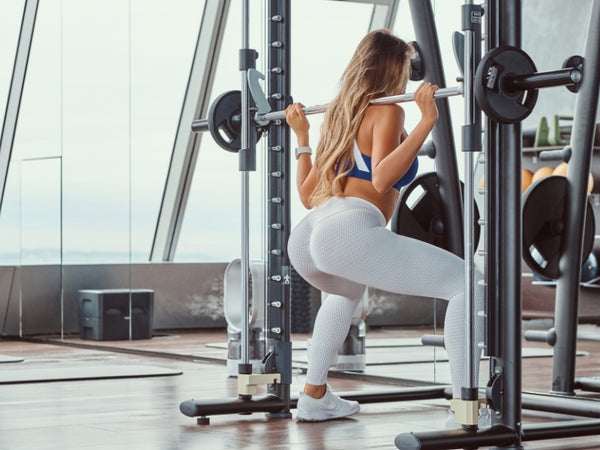
You might be wondering why you should squat in a Smith machine, so let's have a quick look at a few benefits.
Stronger Leg Muscles
As you can probably tell, one of the biggest benefits of doing Smith machine squats is that they strengthen your leg muscles, particularly your quads and glutes, among others.
This is often considered to be one of the very best exercises to help strengthen legs. Stronger leg muscles lead to many other benefits, including most of the ones below.
Maintaining Flexibility
Doing Smith machine squats is also very important for your overall flexibility and range of motion.
Because you are strengthening the muscles around your hips and knees, it helps both of those joints maintain their full range of motion, and in many cases may even improve it.
This helps keep you flexible.
Improving Balance
Next, also consider your need to balance. Your balance is generally based on the flexibility of your leg muscles and joints, as well as the strength of your leg muscles.
The more flexible you are and the better your range of motion is, the better your proprioception should be, which means your ability to adjust and balance in the face of sudden movements and positional changes.
Furthermore, your ability to balance also relies on your muscles being strong enough to keep you upright.
Therefore, seeing as squats help strengthen your muscles and improve your flexibility, they also help you maintain good balance.
Increasing Overall Athletic Performance
Overall, the muscles in your legs are very important in many different regards.
Whether you are jumping when playing basketball, kicking a soccer ball, running upstairs, or doing anything in between, having a strong lower body is very important.
Using an Angled Smith Machine vs a Straight Smith Machine

Something that many people may not know is that there are both straight Smith machines and angled Smith machines, with angled machines usually being inclined by anywhere between 7 and 12 degrees.
Yes, this is still vertical, but there is just a slight angle.
For smith machine squats, an angled smith machine is generally considered best, but make sure that your body is facing away from the direction in which the bar is angled.
If using a straight smith machine, the direction you face doesn't make a difference.
Final Thoughts on the Smith Machine Squat
Now that you know what the proper form and technique for a Smith machine squat is, and why you might want to try doing one in the first place, it might just become your new favorite exercise at the gym.



